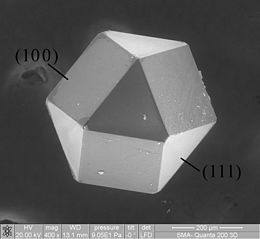This article includes a list of general references, but it lacks sufficient corresponding inline citations. (August 2023) |


Materials science is an interdisciplinary field of researching and discovering materials. Materials engineering is an engineering field of finding uses for materials in other fields and industries.
The intellectual origins of materials science stem from the Age of Enlightenment, when researchers began to use analytical thinking from chemistry, physics, maths and engineering to understand ancient, phenomenological observations in metallurgy and mineralogy.[1][2] Materials science still incorporates elements of physics, chemistry, and engineering. As such, the field was long considered by academic institutions as a sub-field of these related fields. Beginning in the 1940s, materials science began to be more widely recognized as a specific and distinct field of science and engineering, and major technical universities around the world dedicated schools for its study.
Materials scientists emphasize understanding how the history of a material (processing) influences its structure, and also the material's properties and performance. The understanding of processing structure properties relationships is called the materials paradigm. This paradigm is used for advanced understanding in a variety of research areas, including nanotechnology, biomaterials, and metallurgy.
Materials science is also an important part of forensic engineering and failure analysis – investigating materials, products, structures or their components, which fail or do not function as intended, causing personal injury or damage to property. Such investigations are key to understanding. For example, the causes of various aviation accidents and incidents.
- ^ Eddy, Matthew Daniel (2008). The Language of Mineralogy: John Walker, Chemistry and the Edinburgh Medical School 1750–1800. Ashgate Publishing. Archived from the original on 2015-09-03 – via Academia.edu.
- ^ Smith, Cyril Stanley (1981). A Search for Structure. MIT Press. ISBN 978-0262191913.